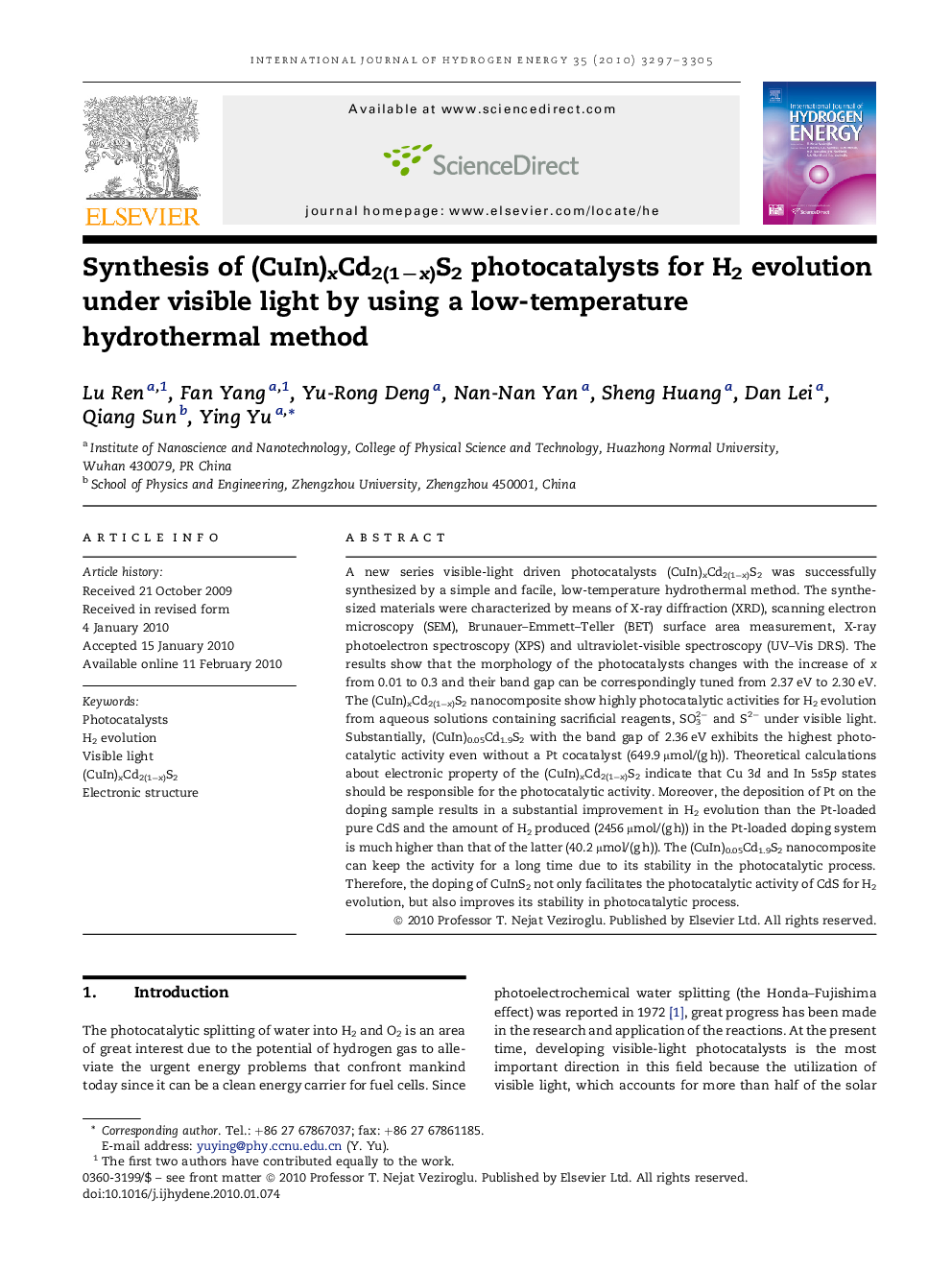| Article ID | Journal | Published Year | Pages | File Type |
|---|---|---|---|---|
| 1282883 | International Journal of Hydrogen Energy | 2010 | 9 Pages |
A new series visible-light driven photocatalysts (CuIn)xCd2(1−x)S2 was successfully synthesized by a simple and facile, low-temperature hydrothermal method. The synthesized materials were characterized by means of X-ray diffraction (XRD), scanning electron microscopy (SEM), Brunauer–Emmett–Teller (BET) surface area measurement, X-ray photoelectron spectroscopy (XPS) and ultraviolet-visible spectroscopy (UV–Vis DRS). The results show that the morphology of the photocatalysts changes with the increase of x from 0.01 to 0.3 and their band gap can be correspondingly tuned from 2.37 eV to 2.30 eV. The (CuIn)xCd2(1−x)S2 nanocomposite show highly photocatalytic activities for H2 evolution from aqueous solutions containing sacrificial reagents, SO32− and S2− under visible light. Substantially, (CuIn)0.05Cd1.9S2 with the band gap of 2.36 eV exhibits the highest photocatalytic activity even without a Pt cocatalyst (649.9 μmol/(g h)). Theoretical calculations about electronic property of the (CuIn)xCd2(1−x)S2 indicate that Cu 3d and In 5s5p states should be responsible for the photocatalytic activity. Moreover, the deposition of Pt on the doping sample results in a substantial improvement in H2 evolution than the Pt-loaded pure CdS and the amount of H2 produced (2456 μmol/(g h)) in the Pt-loaded doping system is much higher than that of the latter (40.2 μmol/(g h)). The (CuIn)0.05Cd1.9S2 nanocomposite can keep the activity for a long time due to its stability in the photocatalytic process. Therefore, the doping of CuInS2 not only facilitates the photocatalytic activity of CdS for H2 evolution, but also improves its stability in photocatalytic process.
